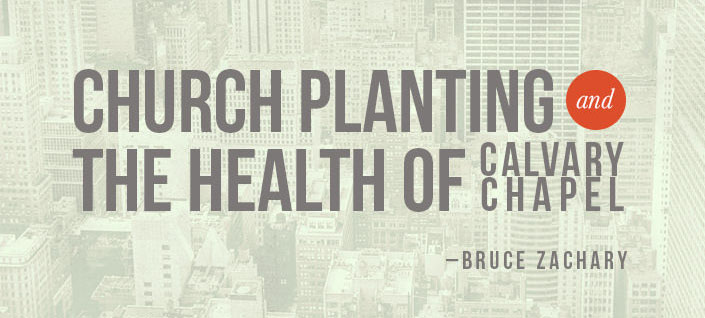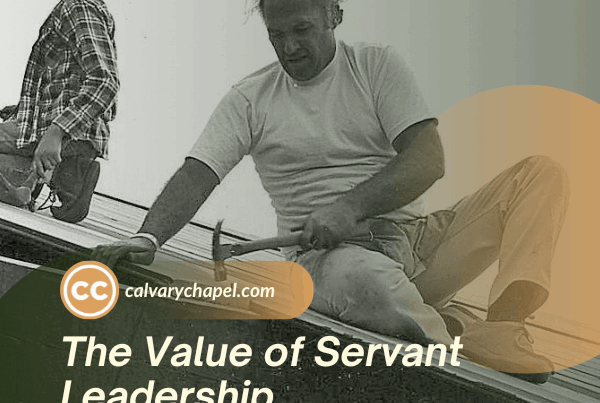
The health of our movement is fantastic but there is one thing …
I’ve been blessed to be a Calvary Chapel pastor for twenty-plus years. I’m a Calvary Chapel church planter and have been used to plant other healthy Calvary Chapel churches. I was mentored by Pastor Chuck, attended the School of Ministry at Calvary Chapel Costa Mesa [CCCM], taught at the School of the Bible at CCCM, and served at CCCM. I was taught a philosophy of ministry and systematic theology, and these core values were replicated when we planted and then effectively transmitted to those that we sent to plant. After about a quarter century of ministry I’ve discovered that there are countless tribes in the Body of Christ, and although many of them are good, I love our movement! Simply stated, when you consider all of our core values we are distinct. I love our reliance on the Spirit, the emphasis of teaching the Bible, the organic and strategic elements, and the relational aspect of our movement. I treasure the informality and the availability of meaningful support from men that I respect and value as friends and fellow laborers. I am aware that other movements are also advancing the Kingdom but I’ve come to the conclusion that our movement is the best way to reach the lost, make disciples, and develop leaders. So I desperately want to see God’s Kingdom and our movement advance.
Is Calvary Chapel Healthy?
Steve Ogne, a pioneer in the study of church planting, observes that healthy church movements grow at a rate of 7-10%. If a movement is growing more than 10% a year it is considered fit, and less than 7% is unhealthy. I’m no math major, but here is how it works- if a movement is growing at 7% it doubles in ten years, and if a movement is growing at 10% it doubles in seven years. So here is the one thing: our rate of growth has decelerated such that it appears to be in the unhealthy category. Again we have many reasons to rejoice about the health of our movement as a whole and many fantastic local churches that comprise the movement. Yet, imagine a man who goes for his annual physical and his pulse, blood pressure and weight are excellent. He can run a six-minute mile, do fifty push-ups, and a hundred sit-ups, but he has an issue with his cholesterol. The doctor tells the man that unless he does something about his cholesterol he’s going to die. Regardless of all the other very healthy factors the one thing that is unhealthy will become his downfall if not addressed.
In the first two decades of our movement the rate of growth was exponential and churches were being planted across the United States and around the world. Church planting was a vibrant part of the culture of our movement. It was modeled and supported by Pastor Chuck and countless other leaders in our movement. However, in the last two decades the rate of church planting and the related growth of the movement have slowed. The math reveals that if we were in the healthy category we would have doubled as a movement in the last seven to ten years and we have not. Although we are continuing to expand our influence as a movement we have not multiplied as before.
The Way Forward
The Calvary Church Planting Network [CCPN] was developed to provide resources to encourage and equip Calvary Chapel pastors to mentor prospective church planters toward reproducing healthy Calvary Chapels, that in turn seek to reproduce other healthy Calvary Chapel churches. CCPN provides abundant free resources that are consistent with our philosophy of ministry and theology. We want to dispel the myths that supporting church planting is too time consuming, too complicated, too expensive, or that it will hurt the sending church. To the contrary, a pastor of a church of 100, 500, 1,000, or 5,000 people can easily identify, mentor, and coach prospective qualified leaders to prepare them for planting. Furthermore, being a sending church benefits the local church rather than harming it.
In essence, the health of our movement requires us to re-engage in church planting with zeal and passion. We must prioritize church planting as part of our collective culture. Finally, it is not merely planting churches, but healthy churches that understand our core values and can replicate the philosophy of ministry and theology that we need. The resources offered by CCPN are simply tools that are available to help those that are interested in expanding the Calvary Chapel movement.
In a subsequent article I’ll discuss why you should plan to attend the “ReEngage 14” church planting conference hosted by CCPN September 29-30, 2014 at Calvary Chapel Costa Mesa.






